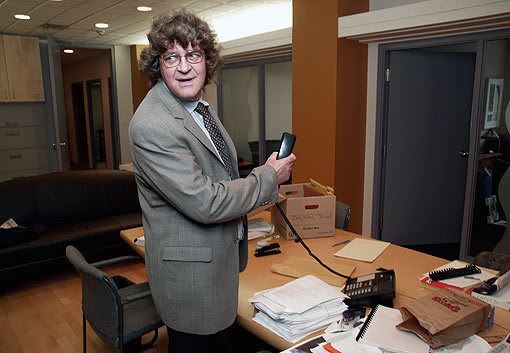May 2, 2007 by ■ David Silverberg
We put our trust in the legal system to convict criminals. But what happens when a pediatric pathologist abuses that trust and ruins people’s lives? An inside look at Dr. Charles Smith’s fall from grace and why an inquiry is only half a solution.
Digital Journal — In Ontario, Canada, a forensic pathologist was sending mothers and fathers to jail for supposedly killing kids. He studied skull X-rays and facial wounds, listened to testimony, and urged police to investigate cases he found suspicious. He also practised some unusual behaviour — in 1997, he took along his 11-year-old son to a graveyard to witness an exhumation of a dead baby boy. Dr. Charles Smith is now enduring heavy criticism for failing to research cases thoroughly, and ultimately sending parents to jail without proper evidence to back up the decision. A review of 45 autopsies Smith oversaw revealed that he apparently erred in 20 of them. And today, a father who was convicted for killing his baby, partly based on expert evidence from this disgraced pathologist, was granted bail after spending nine years in prison. As soon as it became known last month that Smith made mistakes in several autopsies, legal watchdogs demanded an immediate public inquiry. The Ontario government stalled one day before answering the call for an inquiry. Ontario Premier Dalton McGuinty said the province bears a “heavy responsibility” to conduct a detailed investigation. Why did Ontario delay, even if it was for 24 hours? It’s as if the government was waiting to see if there would be an incensed reaction to Smith’s alleged incompetence. Exhibiting that hesitancy, though, rained down a storm of criticism on the political body responsible for balanced justice. James Lockyer, a lawyer for the Association in Defence of the Wrongly Convicted, at his office in Toronto, ON. - Photo by Digital Journal
James Lockyer, a lawyer for the Association in Defence of the Wrongly Convicted, at his office in Toronto, ON. - Photo by Digital Journal
We put our trust in the legal system to convict criminals. But what happens when a pediatric pathologist abuses that trust and ruins people’s lives? An inside look at Dr. Charles Smith’s fall from grace and why an inquiry is only half a solution.
Digital Journal — In Ontario, Canada, a forensic pathologist was sending mothers and fathers to jail for supposedly killing kids. He studied skull X-rays and facial wounds, listened to testimony, and urged police to investigate cases he found suspicious. He also practised some unusual behaviour — in 1997, he took along his 11-year-old son to a graveyard to witness an exhumation of a dead baby boy. Dr. Charles Smith is now enduring heavy criticism for failing to research cases thoroughly, and ultimately sending parents to jail without proper evidence to back up the decision. A review of 45 autopsies Smith oversaw revealed that he apparently erred in 20 of them. And today, a father who was convicted for killing his baby, partly based on expert evidence from this disgraced pathologist, was granted bail after spending nine years in prison. As soon as it became known last month that Smith made mistakes in several autopsies, legal watchdogs demanded an immediate public inquiry. The Ontario government stalled one day before answering the call for an inquiry. Ontario Premier Dalton McGuinty said the province bears a “heavy responsibility” to conduct a detailed investigation. Why did Ontario delay, even if it was for 24 hours? It’s as if the government was waiting to see if there would be an incensed reaction to Smith’s alleged incompetence. Exhibiting that hesitancy, though, rained down a storm of criticism on the political body responsible for balanced justice.
 James Lockyer, a lawyer for the Association in Defence of the Wrongly Convicted, at his office in Toronto, ON. - Photo by Digital Journal
James Lockyer, a lawyer for the Association in Defence of the Wrongly Convicted, at his office in Toronto, ON. - Photo by Digital Journal

No comments:
Post a Comment